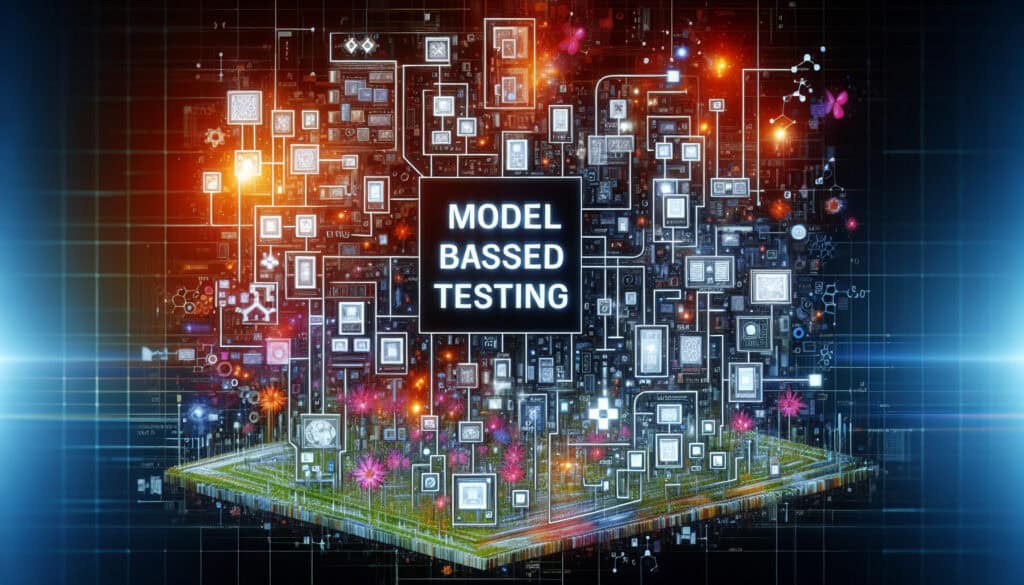Per generare automaticamente casi di test da un modello di sistema.
- Metodologie: Ideazione, Risoluzione dei problemi
Test basati su modelli

Test basati su modelli
- Metodologia agile, Miglioramento continuo, Ingegneria dei sistemi basata su modelli (MBSE), Garanzia di qualità, Controllo di qualità, Gestione della qualità, Sistema di gestione della qualità (SGQ), Test del software, Metodi di prova
Obiettivo:
Come si usa:
- Una tecnica di test del software in cui i casi di test sono derivati da un modello che descrive il comportamento atteso del sistema sotto test.
Professionisti
- Può ridurre il tempo e lo sforzo necessario per creare i casi di test; può migliorare la qualità dei casi di test.
Contro
- La qualità dei casi di test dipende dalla qualità del modello; può essere complesso creare e mantenere il modello.
Categorie:
- Ingegneria, Qualità
Ideale per:
- Generazione automatica di casi di test per un sistema software complesso, come una macchina a stati o un sistema di controllo.
Model-Based Testing (MBT) is particularly effective in industries where systems are highly regulated or require adherence to specific standards, such as aerospace, automotive, telecommunications, and healthcare. In these sectors, products often involve intricate requirements and behaviors that can be accurately represented through models, such as state machines, which illustrate various states and transitions of a system. During the design and verification phases of a project, teams can employ MBT early on, facilitating a shift-left approach in software development, where testing occurs concurrently with design and coding. Participants typically include software developers, quality assurance engineers, and systems architects, who collaborate to ensure that the model accurately reflects the intended behavior of the software. The automatic generation of test cases from these models not only diminishes the manual effort involved in test design but also yields a higher degree of test coverage, as it allows for the exploration of every potential pathway within the system. This methodology also enhances traceability, as each test case can be directly linked back to the requirements outlined in the model. Common tools that support MBT include IBM Rational Test Workbench, Spec Explorer, and Conformiq, each offering unique capabilities to further optimize the testing process. By implementing model-based approaches in their testing strategies, organizations can reduce time to deployment and increase confidence in software reliability, ultimately resulting in fewer defects and enhanced user satisfaction.
Fasi chiave di questa metodologia
- Define the system under test and its requirements through model specifications.
- Create a formal model representing the expected behavior, such as state machines, flow charts, or petri nets.
- Ensure the model accurately captures the functional and non-functional requirements.
- Derive test cases automatically from the formal model using model-based testing tools.
- Execute the generated test cases against the system under test.
- Evaluate test results based on model expectations and identify discrepancies.
- Refine the model and test cases based on feedback and observed outcomes.
- Iterate the process as necessary to ensure comprehensive coverage and validation of the system.
Suggerimenti per i professionisti
- Utilize model diversity; leverage different modeling languages and notations, like UML or statecharts, to capture system behaviors comprehensively.
- Implement mutation testing on generated test cases to assess their effectiveness and identify gaps in the model that may lead to undetected faults.
- Incorporate feedback loops early in development from stakeholders to iteratively refine the model and ensure alignment with system requirements.
Leggere e confrontare diverse metodologie, raccomandiamo il
> Ampio archivio di metodologie <
insieme ad altre 400 metodologie.
I vostri commenti su questa metodologia o ulteriori informazioni sono benvenuti su sezione commenti qui sotto ↓ , così come tutte le idee o i link relativi all'ingegneria.
Contesto storico
1828
1850
1854
1854
1911
1928
1950
1827
1848
1850
1854
1895
1914
1943
1950
(se la data non è nota o non è rilevante, ad esempio "meccanica dei fluidi", viene fornita una stima approssimativa della sua notevole comparsa)















Post correlati
Personalizzazione di massa
Imbuto di marketing
Audit di marketing
Indice MAPO (Movimento e assistenza dei pazienti in ospedale)
Pianificazione delle risorse di produzione (MRP II)
Gestione delle operazioni di produzione (MOM)